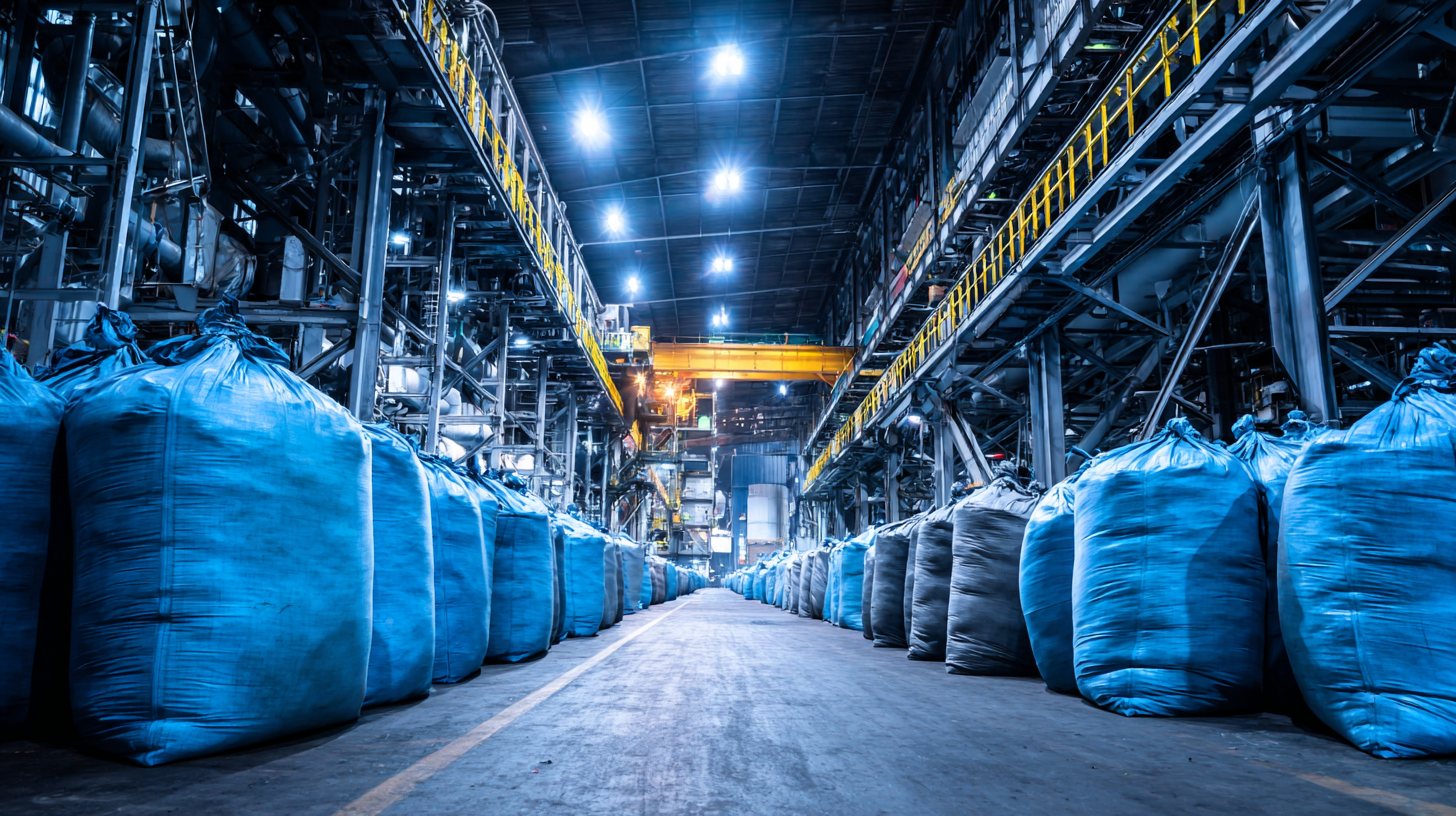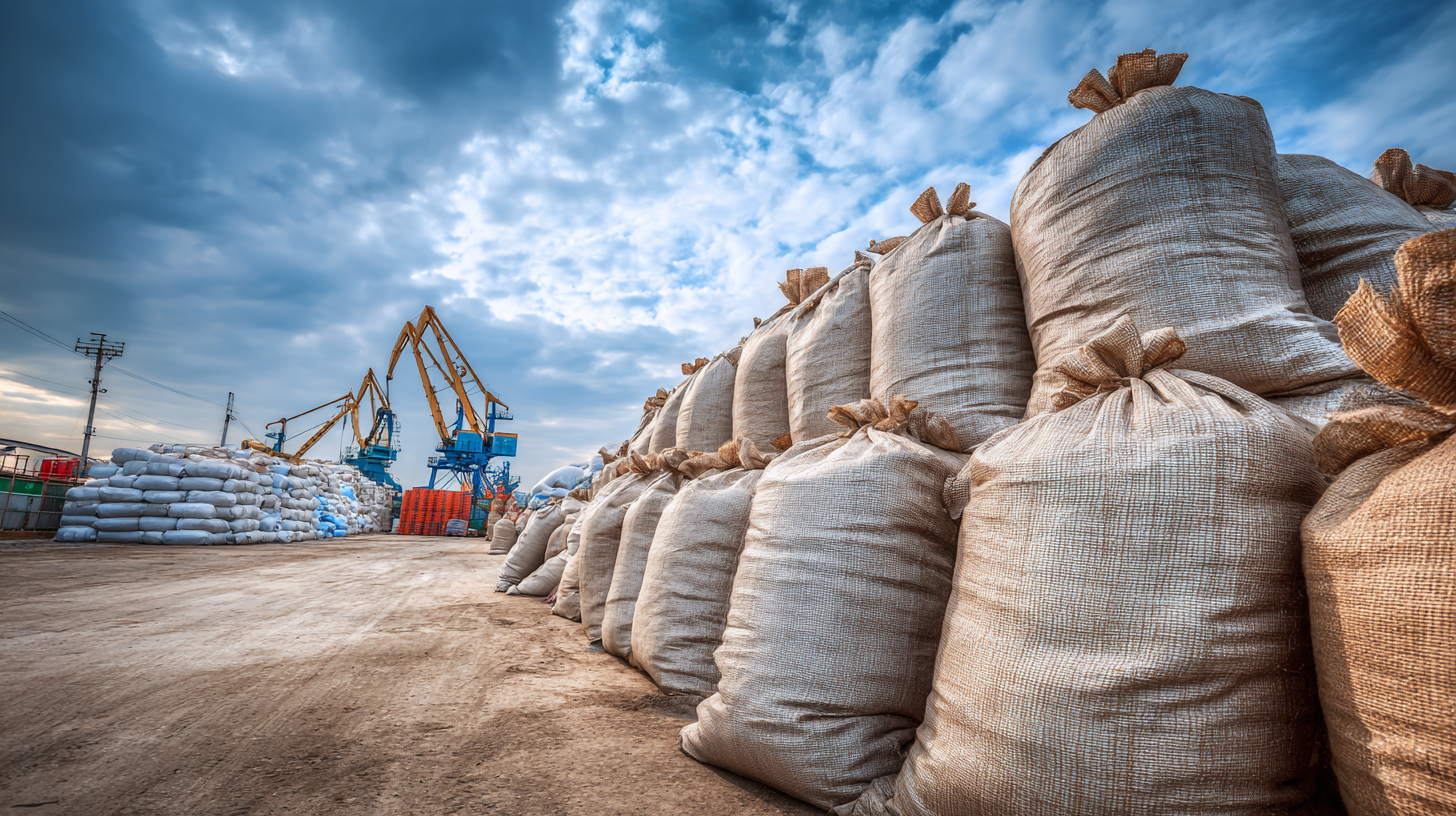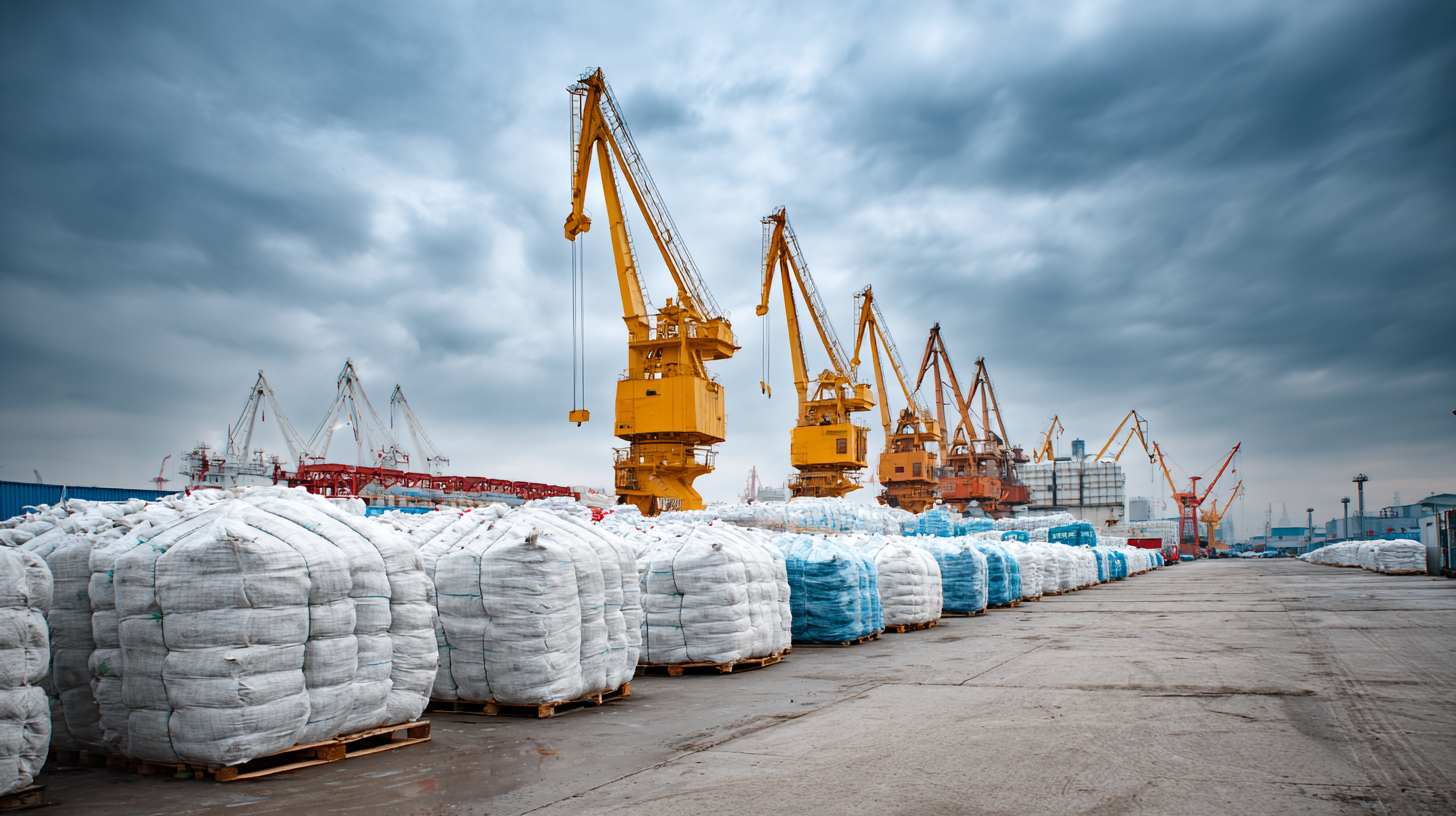Innovative Uses of Best Large Bags for Every Industry and Their Impact on Productivity
In today's fast-paced industrial landscape, the use of Large Bags has evolved beyond traditional storage and transportation solutions, emerging as a game-changer across various sectors. According to a recent report by Smithers Pira, the global flexible packaging market, which includes Large Bags, is expected to reach $300 billion by 2024, driven by the increased demand for efficiency and sustainability. Industries ranging from agriculture to pharmaceuticals are discovering innovative applications for these versatile bags, leading to enhanced productivity and reduced waste.
For instance, the ability of Large Bags to streamline bulk material handling can decrease loading times by up to 50%, according to a study by the International Bulk Journal. This blog will explore the innovative uses of Large Bags in different industries, highlighting their impact on operational efficiency and productivity enhancements.

Innovative Applications of Large Bags in the Manufacturing Sector
The manufacturing sector has seen a revolutionary change with the introduction of large bags, particularly bulk bags and big bags, that enhance efficiency in material handling and storage. According to a report by the Flexible Intermediate Bulk Containers Association (FIBCA), utilization of bulk bags can increase operational productivity by up to 30% as they allow for easy transportation and safer storage of materials. Their large capacity reduces the frequency of handling and the need for additional packaging, which ultimately leads to significant time savings on the production floor.
Additionally, innovative uses of large bags in the manufacturing environment extend beyond mere transportation. As highlighted in a 2022 industry analysis, integrating large bags with Automated Guided Vehicles (AGVs) has streamlined the supply chain process. Manufacturers reported a 25% decrease in downtime when implementing this synergy, as it allows for seamless movement of materials directly from storage to production lines. This versatility not only supports more efficient production schedules but also contributes to lower operational costs, making large bags a vital tool in the modern manufacturing arsenal.
Innovative Applications of Large Bags in the Manufacturing Sector
Impact of Quality Bag Design on Supply Chain Efficiency
In today's fast-paced business environment, the design and quality of large bags used across various industries can significantly impact supply chain efficiency. A well-crafted bag not only protects the contents but is also optimized for handling, loading, and transportation. For instance, using bags with ergonomic features can reduce handling time and minimize the risk of injury for workers, therefore enhancing overall productivity.
Tips for selecting the right large bag include evaluating the materials used—look for bags made from durable, lightweight fabrics. Additionally, consider the bag's size and shape to ensure it accommodates specific products efficiently. Customization is another avenue; tailor your bags to meet the needs of particular processes within your supply chain, ensuring seamless operations from storage to delivery.
Moreover, investing in high-quality bags can reduce replacement frequency and associated costs. Consider bags with features such as moisture resistance or UV protection, which can prolong the lifespan of your products during transport. A strategic approach to bag design can ultimately lead to better inventory management and reduced waste, further boosting productivity across your entire supply chain.

Sustainability in Large Bag Production: Benefits for Global Trade
Sustainability in large bag production has become a critical focus for global trade, as industries increasingly recognize the environmental and economic benefits of eco-friendly practices. According to a report by the World Economic Forum, the use of sustainable materials in product packaging, including large bags, can reduce waste by up to 30% and significantly decrease carbon footprints. This shift not only meets the rising consumer demand for environmentally responsible products but also enhances brand reputation, leading to increased market competitiveness.
Incorporating recycled materials and optimizing production processes are practical steps industries can take to improve sustainability. For instance, using 100% recyclable polypropylene in the manufacturing of large bulk bags not only minimizes environmental impact but also reduces production costs. Tips for businesses may include conducting a supply chain audit to identify eco-friendly material sources and investing in technology that minimizes energy usage during production.
Furthermore, adopting circular economy principles in large bag production can foster innovation. Rather than a linear "take-make-dispose" model, businesses can develop strategies to reclaim and reuse bags, which can significantly cut down on material waste. Companies that implement these sustainable practices can expect improved productivity and a positive contribution to global trade standards, ultimately benefiting the planet and their bottom line.
Enhancing Worker Safety and Ergonomics with Large Bags
In today’s fast-paced work environment, the importance of worker safety and ergonomics cannot be overstated, especially in industries that rely on large bags for transporting goods. The innovative design of these bags not only enhances efficiency but also significantly reduces the risk of injury among workers. By using ergonomically designed large bags, employees can distribute weight evenly, minimizing strain on their bodies and preventing common workplace injuries such as back pain and strain-related disorders.
Moreover, large bags equipped with features like padded handles and adjustable straps allow for customized carrying methods, catering to individual worker needs. This adaptability leads to better posture and reduced fatigue, ultimately enhancing productivity. Industries ranging from construction to manufacturing have begun recognizing the necessity of integrating ergonomic solutions into their workflows. Through proactive measures such as upgrading to advanced large bags, companies not only invest in their workers' health but also ensure a more efficient operation, creating a safer and more sustainable workplace environment.

Case Studies: Success Stories of Large Bag Utilization Across Industries
In various industries, large bags have demonstrated their versatility and practicality, leading to significant productivity enhancements. For instance, the agricultural sector has embraced bulk bags for the efficient storage and transportation of fertilizers, grains, and seeds. A case study from a leading farm highlighted how the use of large bags reduced spoilage rates by 30% during transit. By utilizing these bags, farmers could streamline their supply chain, ensuring that products remain fresh for longer periods, ultimately increasing profitability.
Similarly, in the construction industry, large bags have become integral for handling and transporting aggregates like sand and gravel. One construction firm reported improved workflow by implementing large bags that can hold up to a ton of materials each, allowing workers to handle bulk resources more efficiently. This change led to a decrease in loading and unloading times, enabling projects to progress more rapidly and reduce labor costs. These case studies exemplify how innovative implementations of large bags can lead to tangible improvements in operational efficiency across diverse sectors.
Innovative Uses of Best Large Bags for Every Industry and Their Impact on Productivity - Case Studies: Success Stories of Large Bag Utilization Across Industries
| Industry | Type of Large Bag Utilized | Primary Benefits | Impact on Productivity |
|---|---|---|---|
| Construction | Bulk FIBC Bags | Increased material handling efficiency | 30% faster loading/unloading |
| Agriculture | Flexible Intermediate Bulk Containers (FIBCs) | Reduced spoilage and waste | 20% reduction in product loss |
| Food and Beverage | Customized Food-Grade Bags | Improved safety and compliance | 15% increase in throughput |
| Chemicals | Heavy-Duty FIBC Bags | Enhanced protection against leaks | 25% decrease in material waste |
| Pharmaceuticals | Controlled Environment Bags | Maintained product integrity | 10% reduction in return rates |
